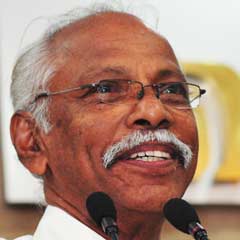The assassination of former prime minister Rajiv Gandhi at Sriperumbudur in Tamil Nadu in 1991 sparked a debate on media ethics.
The tragedy was witnessed by representatives of almost all important media houses in India and abroad. Everyone had a photograph of the Congress leader lying in a pool of blood with his head blasted by a suicide bomber. Indian media splashed the picture across the news pages while the international media chose not to publish it.
International media considered the publication of such a photograph disrespectful to the deceased person and disgusting to society. They even criticized the Indian media for its lack of delicacy. The event sparked a controversy and eventually led to a change in practices while dealing with such pictures and reports.
However, the discipline and courtesy shown by mainstream media in such matters do not seem to be applicable to social media such as Facebook and WhatsApp. These platforms do not have any editor or publisher to monitor the contents. Anyone who can type can be a reporter or editor on social media. Anyone can write anything. Anyone can post any photograph. There is no scrutiny.
Recently, social media relished a video clip of the final moments of an RSS worker who was killed in Thiruvananthapuram. Has anyone cared how cruel the images would have been to the deceased man and his family.
The circulation of the clip was nothing short of a criminal offense because it fueled the hate and shattered all attempts to restore peace.
The recent riots in Bengal were exacerbated by the propagation of some visuals from the Gujarat riots in 2002. The clips were shared as “latest”. Even the Muzzafarnagar riot in Uttar Pradesh in 2013 was fanned by Facebook posts and pictures which later turned out to be fake.
New media plays a significant role in polluting our social ambiance. Women are particularly targeted, by tinkering with photographs, spreading calumnies and luring them into traps. Many of the helpless women have committed suicide.
Where lies the answer? I have three suggestions.
1. The government should be vigilant about these issues. The cyber police wing should step up monitoring.
2. All political parties, social organizations and other associations should raise the awareness among their cadres and members.
3. Many of the perpetrators go on with their evil work under the safety of fake profiles. There should be a law to prevent this. Fake profile should be a penal offense like impersonation.
The Sanskrit theater bars anything disgusting to be shown on stage. Art cannot be disgusting.
We need the same injunction on social media as well.

























 Representational image
Representational image